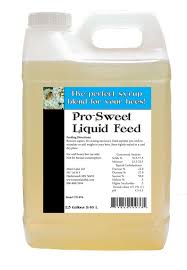A beekeeper from the Hudson area brought me a frame to look at last week. He suspected something was going on in with his hive. After looking at the frame, I discovered American Foulbrood (AFB) scale in the cells of the frame.
I have seen many frames of AFB over the years so the diagnosis was easy. I could see the scale on the bottom of the cells. The larvae had died and turned to a gel that sinks to the bottom of the cell. This gelatinous material will desiccate (dry out) and turn to a hard scale on the bottom of the cell. I did not do a rope test, because there was no active larvae to test from on the frame.The AFB scale is highly infectious when accessed directly by the bees, such as if they robbed the AFB hive of all their honey and ingested a large number of AFB spores.
We also checked the AFB scale with a black light. AFB scale lights up to a bright green color when hit with a black light. The brighter the black light the better if glows. So if you purchase a black light, don't cheap out, the black lights with a higher number of led's work better. This one has worked for me
Black Light
So, how did they get the AFB?
The beekeeper has been very careful over the years, buying only new equipment and never buying nuc's. There is always a possibility of getting AFB if you purchase nuc's. The AFB scale can be on used frames in the nuc. This is why package bees are usually a safer bet.
Did his hive rob a weak neighbors colony that was weak or dying of AFB? Was the neighbors hive dead from last year and they did not put bees in the hive and the bees robbed out the honey? Most of the time hobbyists do not even know they have AFB. They buy new bees every year and by August their bees are dead. If your bees are weak and being depleted of bees right now, if you don't have an explanation for the reason, look for AFB in the frames.
Is someone in the Hudson neighborhood feeding store purchased honey to the bees? Some civilians will see honeybees and feed them store bought honey, thinking they are helping out the bees. Giving store bought honey to your bees, can be a way to give AFB to your bees. Is someone feeding honey to hummingbirds? The bees can be robbing this feeder. Somewhere near this beekeeper is the source of the AFB. This Hudson beekeeper is going to have to be vigilant checking their hives for AFB. There is a possibility they could get reinfected if the source is not discovered.
The beekeeper also contacted a vet for a prescription for an antibiotic. The bees will be removed of the drawn comb and will be shaken onto new frames and new foundation. An antibiotic regimen is probably a good idea. The brood break and the delay of larvae at the start, feeding syrup to flush the AFB spores out of the bees bodies, and the antibiotics will get the bees off to a fresh start.
I do have a frame of AFB comb. Anyone that wants to see it, can stop by my shop to see it.
AFB is not widespread. I see it every year from beekeepers bringing me frames to look at, but a few beekeepers do discover it in their hives. Normally, beekeepers get it from used equipment. Before you use used equipment, it is best to have it looked at by a competent beekeeper.
Having an undiagnosed source for AFB can be troubling.
It is important to be on the lookout for AFB in your hives. Discolored larvae is a red flag that something is happening to your brood. It does not mean you have AFB, but paying attention to what is happening in the hive is key to staying ahead of any possible trouble.





































